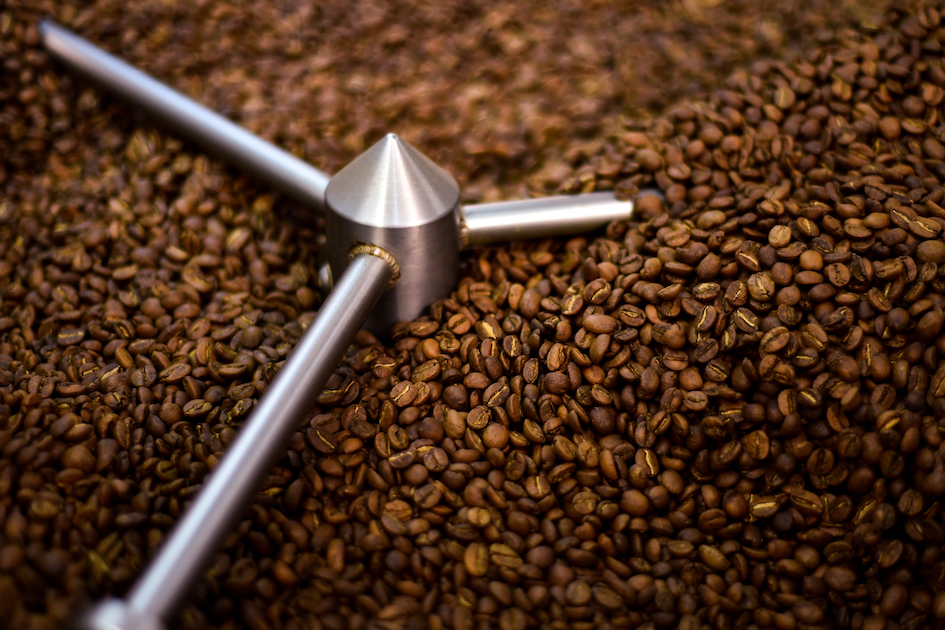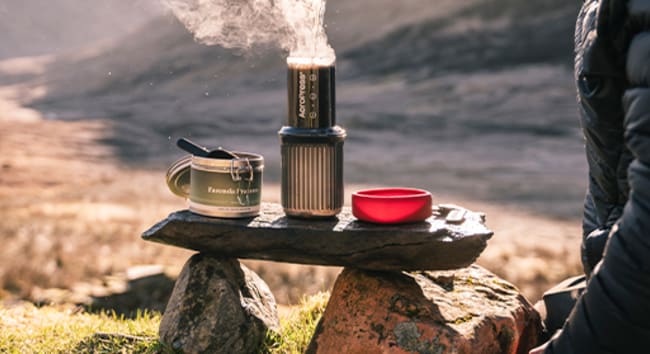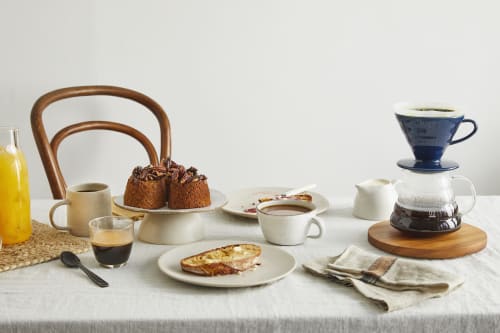
As anyone who has browsed the Pact Coffee menu will know, we offer a wide variety of coffees from many different origins - all of which offer a myriad of different tasting notes and roast profiles. But how should you go about choosing the right coffee for you?
Everyone’s personal preferences are different, but we like to think we have something for everyone. So, we’re here to give you the lowdown on how to work out just what kind of brew you’ll love.

Where do coffee taste and flavour notes come from?
Coffee flavour and tasting notes occur from a range of elements which we’ve broken down below. The key thing to remember is that no artificial flavourings are added to our coffee, the tasting notes are all down to how the coffee has been grown, processed and roasted. Think of it like clean eating - our coffee is as au naturel as it gets!
Coffee Plants
When choosing which variety of coffee plant to use, farmers weigh up a number of factors - such as availability, yield and disease resistance. Different plants mean different cherries and so, different coffee flavours. An example of popular coffee varieties in Colombia include Castillo and Caturra.
Altitude
There’s an important reason why we specify the altitude at which each of our coffees is grown - it has a huge impact on the rate the coffee cherries mature. Higher altitude farms generally result in the cherries maturing more slowly and this results in them developing more complex flavour and acidity profiles.
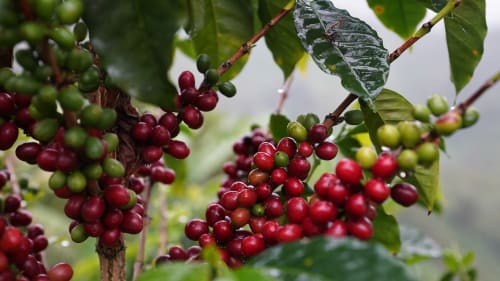
Processing Methods
Likewise, the method with which the cherries are processed (taken from cherry to green bean), plays a huge part in its flavour. Most coffee processing takes place on the farm itself, using one of four different methods - you’ll see which one has been used, noted on the accompanying card for each coffee. They are:
Washed - these coffees tend to have a great clarity of flavour, with crisp fruit acidity and rich dark chocolate flavours.
Pulped natural - these coffees are on the whole a little sweeter, with lower acidity and ripe fruit and nutty flavours. Natural - a coffee processed this way is often intensely sweet with a low acidity. Tasting notes of stewed fruits, milk chocolate and cocoa powder are often present.
Honey - this method produces moderately sweet coffees, with low acidity and excellent cup clarity. Flavours include plum, cherry, hazelnuts and cashews.
Roast
We tailor the roast level to every individual coffee depending upon what characteristics it has. A darker roast can mask certain tastes, so you’ll notice we often use lighter roasts in order to protect the complexity of flavour.
The 4 Flavour Categories
There are many different aspects to consider when choosing your coffee! Deciding what flavours will suit your personal tastes may not necessarily be immediately obvious - that’s why we created four different categories for our coffee, to make it simpler to narrow down what will work for you.
Full-bodied and rich
Flavours: Chocolate and nut
Example tasting notes: Chocolate malt milkshake, dark chocolate and cocoa nibs
Roast profile: Dark
Origins: Brazil, Colombia, Honduras
If you’re a chocolate lover, you’ll adore dark roast coffees. Our Bourbon Cream Espresso tastes like nostalgic bourbon biscuits, whereas Zaroca reminds us of biting into a rich bar of dark cocoa.
The dominant flavours of dark roast coffees are rich milk chocolate, nut and malt flavours. A darker roast develops a seriously creamy mouthfeel with a mild acidity bringing emphasis to chocolate, caramel or toffee sweetness.
Smooth and balanced
Flavours: Chocolate and fruit
Example tasting notes: Fruit & nut chocolate, mandarin and dark chocolate
Roast profile: Dark to Medium
Origins: Brazil, Colombia, Peru
Dark chocolate and ripe apricot flavours are to be expected from the naturally processed coffee in this line. The acidity profile is light and gentle. There’s also an intense sweetness, which is reminiscent of toffee or ripe, baked fruits and refined sugar. The mouthfeel is very heavy or coating, a bit like peanut butter.
For an example of this coffee style, try our Fruit & Nut Espresso blend. This tastes like a heavenly bar of fruit & nut chocolate.
Vibrant and complex
Flavours: Orchard fruits
Example tasting notes: Peaches and cream, bakewell tart, red apples
Roast profile: Medium
Origins: Colombia, Rwanda, Honduras, Guatemala, El Salvador
These coffees boast delicious and delicate fruit notes, such as orange and peach. These flavours are enhanced by a fuller acidity, which lingers into the aftertaste. A coating, juicy or syrupy mouthfeel is common with these coffees, and the sweetness is intense - like ripe or baked fruit, or perhaps cane sugar.
Why not check out our current Micro-Lot coffees to find out which fruity favouries are currently on the Pact line-up?
Light and refreshing
Flavours: Floral and tropical fruits
Example tasting notes: Grapefruit, peach or lemon iced tea
Roast profile: Light
Origins: Kenya, Colombia, Rwanda
Zesty citrus, tropical fruits and floral flavours are common in this category. The acidity is pronounced but balanced in the cup, often reminiscent of fresh apples, grapes or bright citrus. The roast profile of these coffees is lighter - meaning that the sweetness is more like fruit, fructose or ripe coffee. The lighter roast also means a slightly lighter mouthfeel, akin to syrup or tea.
Again, you’ll find fruity & floral tasting notes present in our Micro-Lot coffees. Check out our current menu to see what’s on offer.
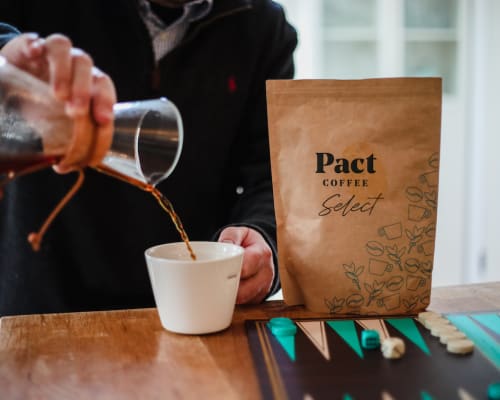
Keeping track of your favourite coffees
We’ve created a Rate Your Coffee function to make it super easy to keep track of which coffees you like and dislike! Simply log in to your Account Area and click Rate Your Coffees to give each one a star rating - you can even leave personalised comments for your own reference in the future.
Read More
We hope that this guide has helped you to make an informed decision on your next coffee purchase! If you’re looking for even more coffee knowledge, check out our Filter vs Espresso blog or get all the info you’ll ever need on coffee processing methods right here.
